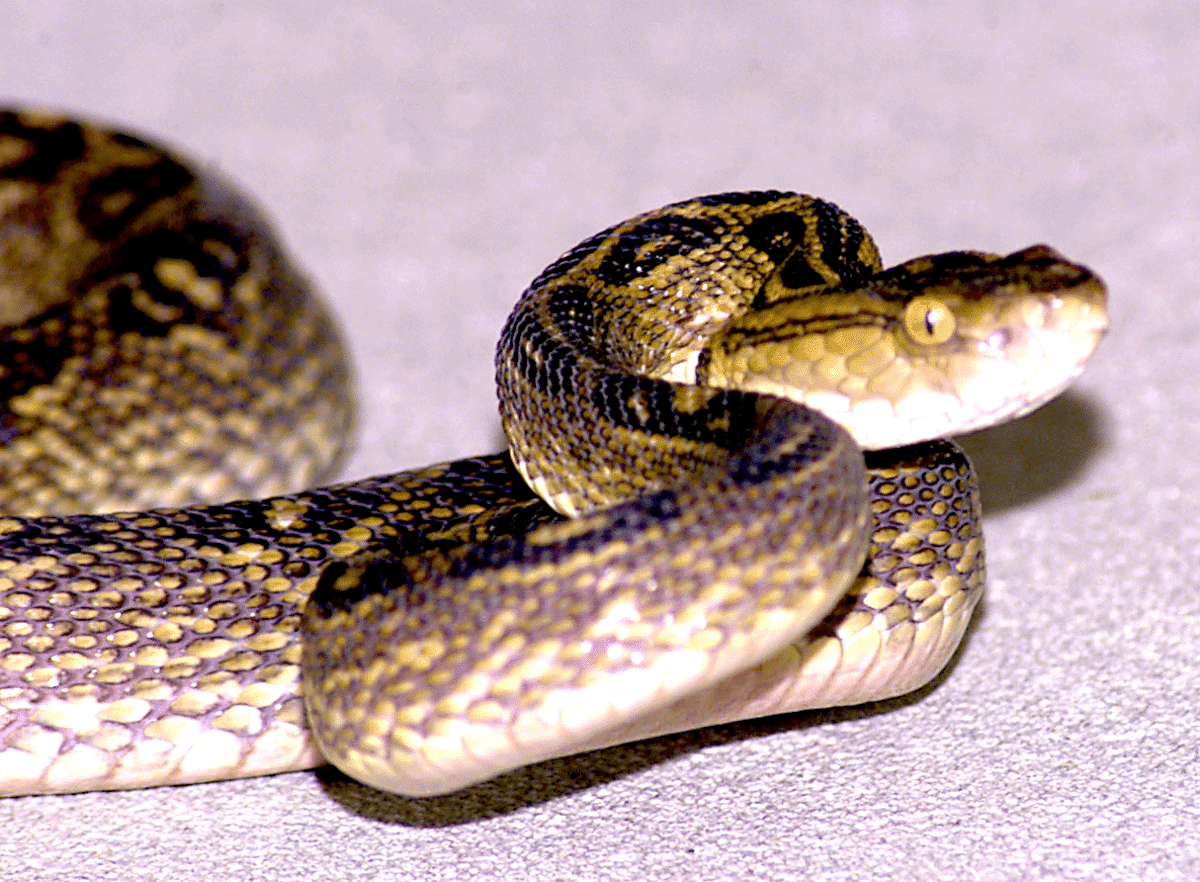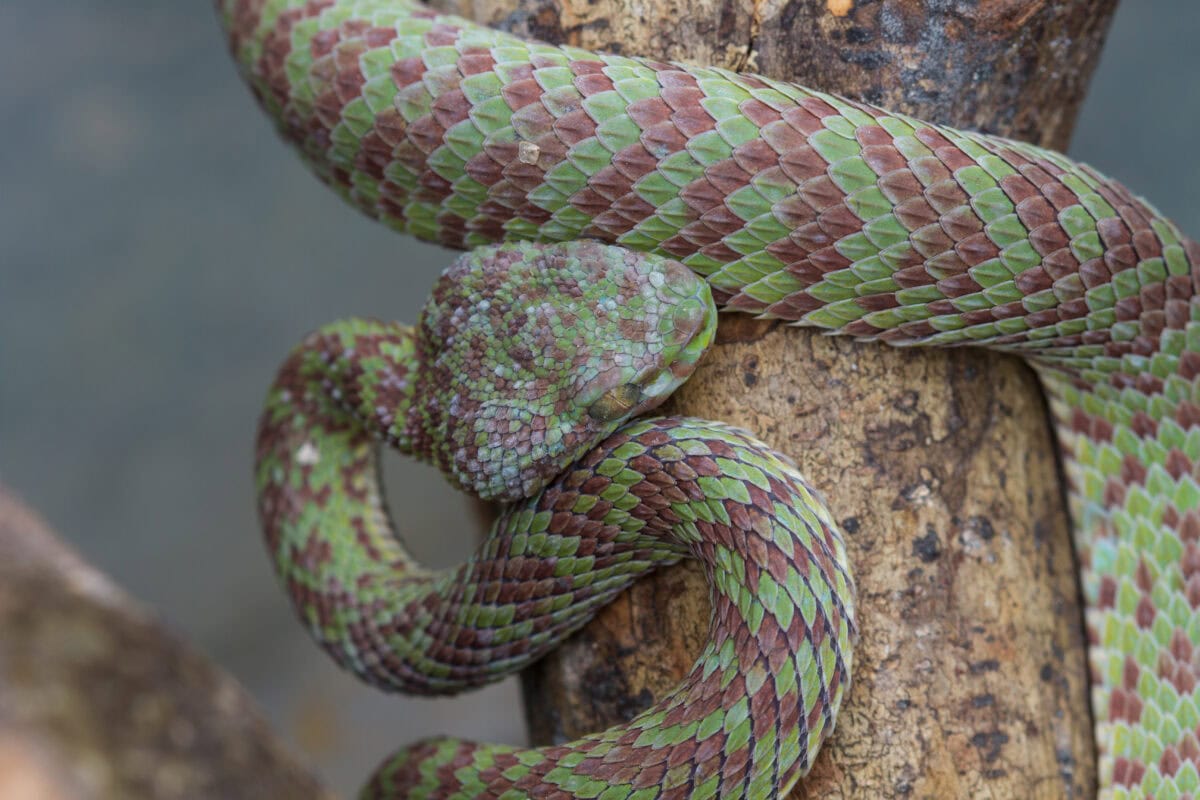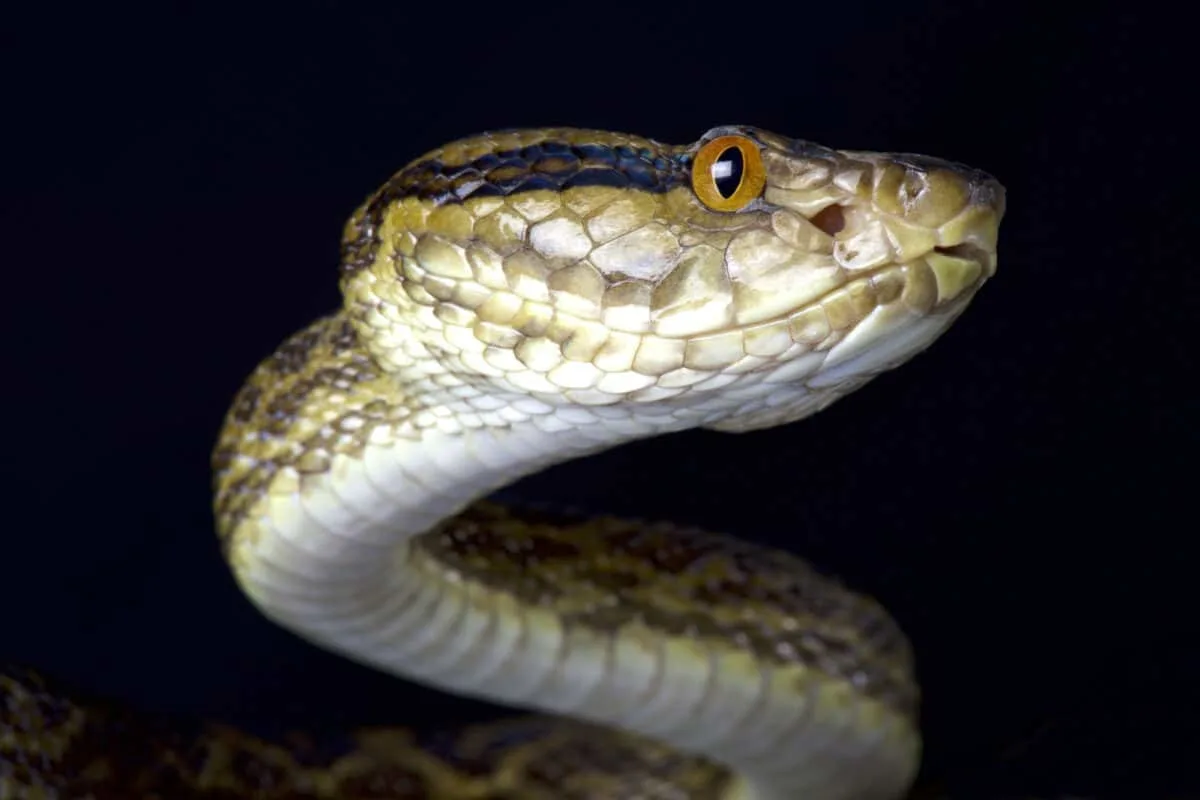Take a gripping trip into the world of venomous marvels as we explore the story of the largest Habu Pit Viper ever captured on camera. Disclosing this behemoth reveals a creature that is both an important part of its ecosystem and a source of fascination. Thus this remarkable viper reveals a multitude of secrets that demand further investigation, from its enormous size to its captivating behavior.
| Key Points | Description |
|---|---|
| Animal | Habu Pit Viper |
| Scientific Name | Protobothrops flavoviridis |
| Location | dense forest of Okinawa, Japan |
| Size | 7 feet |
| Physical Characteristics | Boasting an arresting blend of earthy browns, vibrant greens, and subtle yellows, the intricate scale patterns serve both aesthetic and practical purposes, aiding in seamless camouflage. |
| Behavior | Contrary to common misconceptions, the Habu Pit Viper is a patient and strategic hunter, relying on ambush tactics and a potent venom to swiftly incapacitate its prey. |
| Ecological Significance | As an apex predator, the viper plays a vital role in maintaining ecological balance by controlling the populations of smaller mammals, preventing disruptions to the delicate ecosystem. |
The Habu Pit Viper: A Goliath in the Wilderness

Situated in the remote landscapes of Southeast Asia, the Habu Pit Viper (Protobothrops flavoviridis) reigns supreme as one of the region’s most awe-inspiring slithery reptiles.
Our story unfolds in the dense forests of Okinawa, Japan, where researchers recently stumbled upon an individual specimen that shattered all previous records for size. Evidently measuring a staggering 7 feet in length, this behemoth of a snake has sent shockwaves through the herpetological community.
Physical Characteristics: A Symphony of Colors and Patterns

The largest Habu Pit Viper boasts an arresting blend of colors and patterns. They not only contribute to its mystique but also serve practical purposes in its natural habitat. Sporting a mesmerizing combination of earthy browns, vibrant greens, and subtle yellows.
Its camouflage allows it to seamlessly blend into the lush foliage.
Behaviors Unveiled: The Dance of Predation

Observing the behavior of this colossal serpent reveals a fascinating dance of predation. Contrary to common misconceptions, the Habu Pit Viper is a patient and strategic hunter.
Armed with a potent venom that incapacitates its prey swiftly. Thus this snake often relies on ambush tactics. Its gargantuan size provides a significant advantage, enabling it to target larger prey and assert dominance in its ecological niche.
Significance in the Ecosystem: Balancing the Circle of Life

Beyond its intimidating looks, the Habu Pit Viper is an important ecological balance-keeper. Being the top predator, it aids in managing the numbers of smaller mammals. Hence uncontrolled growth that might upset the delicate balance of the ecosystem is prevented. The existence of this serpent is evidence of the interdependence of all species. Moreover the complex network of interactions that keeps life afloat in the wild.
Implications of Gigantism: Deciphering Nature’s Puzzle

The finding of such an enormous specimen has far-reaching implications. Thus it raises concerns about the variables influencing gigantism in reptiles. The possible link between the snake’s size and climate change has scientists intrigued. Growth patterns in reptiles may alter as global temperatures rise. This Habu Pit Viper’s exceptional size makes it an intriguing case study for comprehending the finer points of adaptations brought on by climate change.

Wrapping Up with the Largest Habu Pit Viper

As our expedition into the biggest Habu Pit Viper ever documented comes to an end, we are in awe of the mysteries this amazing snake has revealed – from its enormous size and patterns to its cunning hunting techniques.

It appears that every element adds to the breathtaking fabric of the natural world. These discoveries provide insight into the complexity of the situation as ecosystems continue to be impacted by climate change. Moreover the methods by which wildlife adjusts to changes in its surroundings. The tale of the enormous Habu Pit Viper is proof of the natural world’s adaptability and resiliency. Thus, it begs us to treasure and guard the wonders that flourish in the middle of the wild.

Thank you for following along with this article –
Next up in the animal kingdom:
Join our Forum for free today!

- Big Cats Love Mouthing Affection - July 22, 2024
- Kind Elephant Merciful To Lion Cubs - July 22, 2024
- Beachgoers Save Massive Shark Stranded In Florida - July 22, 2024

